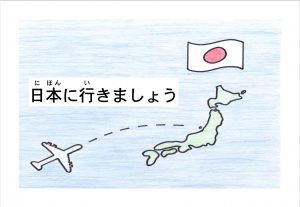
この本は面白かったです。私はとても感動しました。ハチは先生いちばんのともだちでした、でも先生は病気だった、死にました。いえにかえりません。ハチは10年間毎日駅に行って、先生に待ちました。私はハチは寂しかったと思います。
This book is very interesting. It really touches my heart. Hachi is the dog of a college professor, they walk to the train station together everyday, and Hachi wait for the professor at the station in late afternoon to take the professor home. However, the professor died one day, and never return home again. Hachi didn’t know about it, so for ten years, he goes to the train station and wait for the professor’s return. I think Hachi is very very lonely.
I recommend this book to first year Japanese students because it contains a lot of grammar we’ve learned, and I think it will be a great review. Also, there are some new vocabularies that we can learn.









